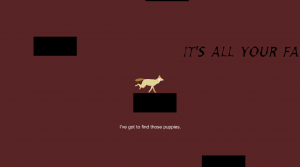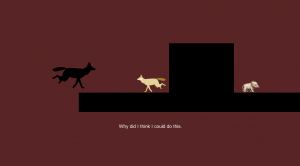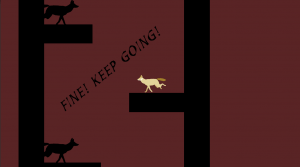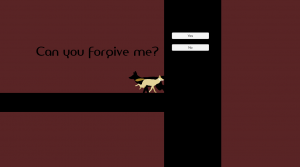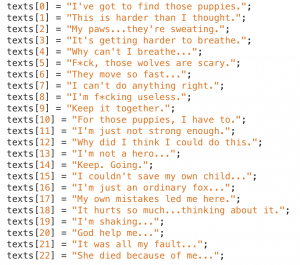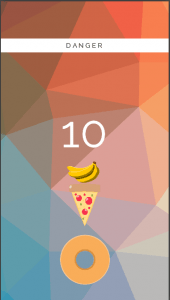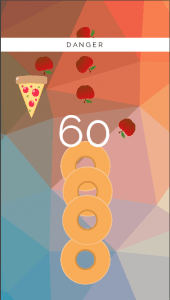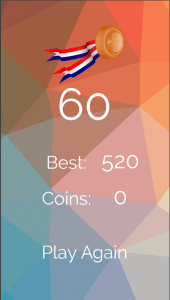For our final project, Daniel Shapiro and I wanted to create a game that delves into the emotions of anxiety. Our game, “Untitled Fox Project”, is a 2D platformer that lets you play as a fox trying to rescue puppies in a building. As you explore and search for puppies, there are wolves that try to torment and stop you. Touching a wolf will have you respawn at a previous checkpoint. All the while, text consistently appears at the bottom of the screen. This text is meant to represent the fox’s inner thoughts and unease. Some examples include “Why can’t I breathe…” and “I’m just not strong enough” (I’ve attached a code snippet that shows all possible texts). The fox doesn’t believe it is worthy enough to take on this rescue mission. Because of past traumatic experiences and the pressure from the wolves, the fox’s anxiety gets to it. However, as you lead the fox up the building and collect more puppies, the fox starts to become more confident. When you approach the top levels of the building, the anxiety text disappears altogether and the fox is unfazed by the wolves. At the very end, a final wolf appears, asking you for forgiveness. You have a choice between answering yes or no. Choosing either will send you to a blank screen and the game will end.
We wanted the wolves to represent an emotionally abusive partner. Though due to the nature of the game, they can be perceived as the fox’s inner demons as well. Some things that the wolves say are “You deserve nothing.” and “It’s all your fault.” We left some vagueness so that the player can have their own interpretation. We also left the ending open-ended. There truly is no right or wrong answer when it comes to forgiving someone who has emotionally abused you. We believe that a person has truly moved on from their pain if it longer affects their life. The blank screen is meant to represent that. We drew inspiration from our own past experiences and games that were mentioned in class. Loved and The Misadventures of P.B. Winterbottom were two in particular. The style, tone, and message of these games helped us form our own creation. The idea of going against the narrator’s demands felt inspiring. We wanted Untitled Fox Project to be a game that allowed people to step into the shoes of someone who experiences anxiety and is attempting to overcome it in a meaningful way.
